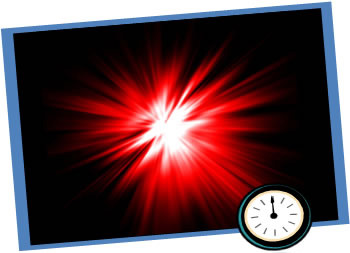The Big Bang Theory – in more detail
What observations support the Big Bang Theory?”

You’re sure to hear about the Big Bang Theory a lot in your life – and it’s quite tough to follow. So if you’re not ready to take on the task of reading the detail right now, then skip past this page and have another look another time.
I like a challenge … tell me more!
Scientists can’t run time backwards to see for themselves how the Universe began. But they do see clues in space today that have helped them to come up with a theory.

The first clue is that scientists have noticed something strange about the light that comes to us from stars a long way away. It’s redder than it should be. Scientists have called this observation, ‘The Red Shift’. There’s a way to explain why the Red Shift is happening and that is – that space is gradually stretching out so that the universe is getting bigger. If you want to know why this explanation works, visit this page ‘ What is the Red Shift?‘.
If this explanation is right – and most scientists today think it is – then it follows that billions of years ago, the Universe was smaller. If scientists trace the expansion right back until the Universe is as small as possible, this suggests it started in one spot, about 14 billion years ago.
It’s an interesting theory, but is it right? Here’s what Professor Jim Al-Khalili thinks (watch the video below).
Now it’s time to find out… about religious ideas about Creation